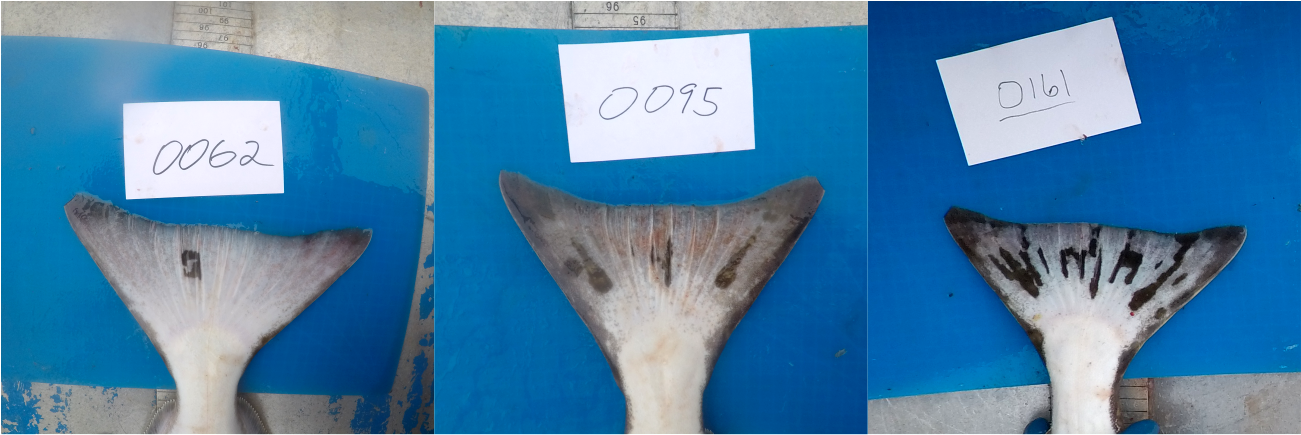Migration studies have been a key component of IPHC research since its inception in the 1920s (Carpi et al. 2021). A variety of tags have been since utilized for mark-recapture investigations including external tags (strap, wire, dart), internal tags (coded wire tags, passive integrated transponder tags) and pop-up satellite transmitting tags,. Each of these methods is able to aid in our understanding of a component of migration or behavior of interest, but have challenges such as variable reporting rates and high deployment costs. In recent years, there have been investigations with other species regarding the use of natural tags, i.e. marks or patterns indigenous to specific species and unique to individuals, in migration studies. For natural markings to be effective in serving as tags they must a) be unique to the individual, and b) exhibit longevity (stay permanent over time).
Pacific halibut have natural patterning on both sides of the body and in 2017, the IPHC conducted a pilot study to explore the extent of uniqueness that can be determined from images of an individual fish with the use of pattern recognition software. This initial work was considered a success in that the blind side of Pacific halibut tails present unique enough patterns for computer-assisted recognition software to match two images of the same tail. The next step is to determine if the markings on the blind side of the tail exhibit longevity as the animal continues to grow. To this end, beginning in 2018 a subset of sublegal Pacific halibut have been wire tagged and their tails photographed before release as part of the IPHC Fishery-Independent Setline Survey (FISS). The specific wire tags used in this project request a photograph of the tail [insert image reference see below] upon recovery and are associated with a reward. To date 1,668 Pacific halibut have been released with tail images, and 45 of these have been recovered.
Results from this work will enable us to determine if natural tail tags can be reliably used to provide a low cost and high precision image tagging method for future IPHC ecological studies.
Figure 1. Wire tags requesting a photo of the tail upon recovery.

Figure 2. Examples of blind side Pacific halibut tails from tagged and released individuals.
